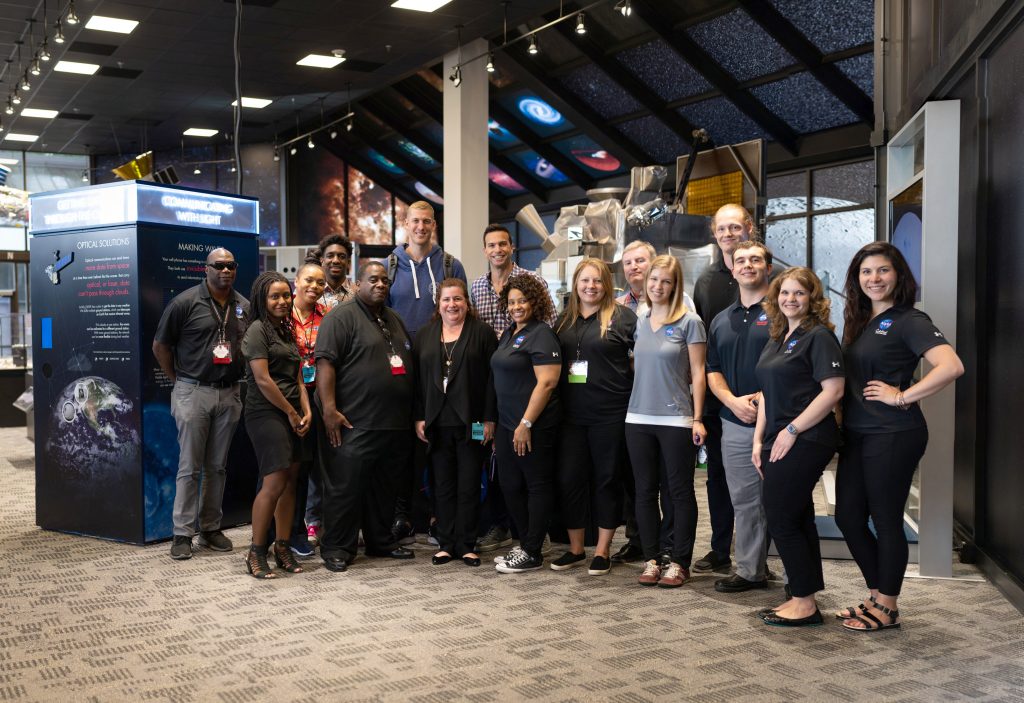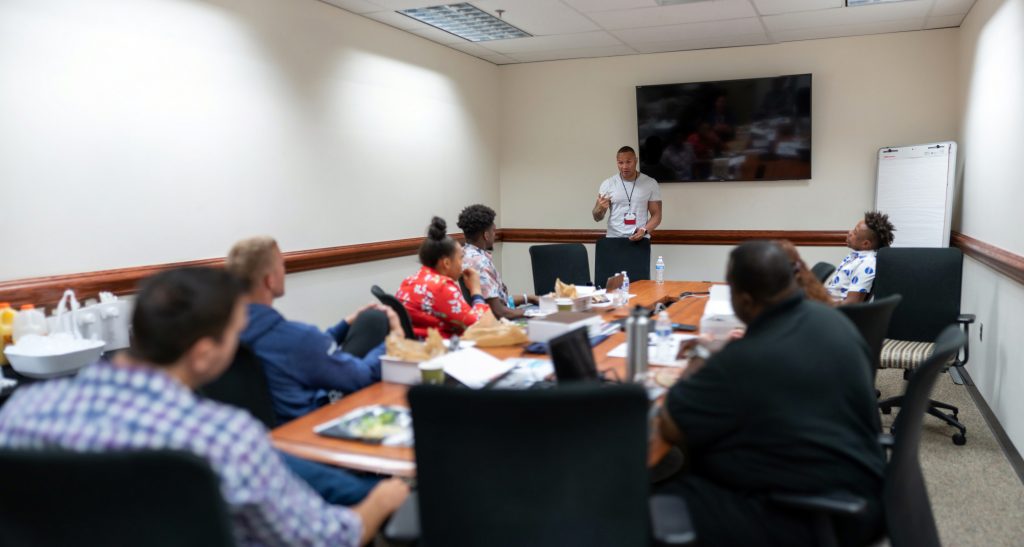
Participants of the meeting gathered in the NASA Goddard Visitor Center at the end of the day. Photo credit: NASA Goddard/Taylor Mickal
On July 24, NBA athletes with the National Basketball Players Association (NBPA) visited NASA’s Goddard Space Flight Center in Greenbelt, Maryland to learn about NASA’s technology transfer and commercialization opportunities.
“This meeting provided a glimpse at the NASA Technology Transfer Program and how athletes can become entrepreneurs in the tech industry,” said Dennis Small, a senior technology manager with Goddard’s Strategic Partnerships Office. “We introduced the athletes to NASA technologies and how to license those technologies as the basis for a new business.”
“It was incredible to get an inside look at NASA and the different types of technology they have to offer from a licensing standpoint,” said Mason Plumlee, program participant and current NBA player. “I am grateful to the NBPA and NASA for putting together this unique experience for us and excited to continue to learn about the different opportunities within the technology space.”
Through a Space Act Agreement with the NBPA, NASA worked with the organization to share information with athletes who are interested in exploring the technology sector.
“We were thrilled to be able to partner with NASA to provide our players with this type of hands-on experience and access to their exclusive technology,” said Deborah Murman, Director of Career Development at the NBPA. “We look forward to building on this partnership and hopefully the expansion of this program over the next few years.”
In the morning, athletes met with Goddard’s team of technology transfer professionals, who connect technology developers and innovators at Goddard to entrepreneurs and companies in the private sector. Through the process of technology transfer, NASA ensures that innovations developed for exploration and discovery are broadly available to the public, maximizing the benefit to the country.
Athletes heard from Goddard astrophysicists Keith Gendreau and Zaven Arzoumanian, inventors of NASA’s 2019 Government Invention of the Year, the Miniaturized High-Speed Modulated X-ray Source (MXS). Initially developed to look at black holes, the technology is being tested as part of a computed tomography (CT) scanner with partners at Massachusetts Institute of Technology (MIT) and Massachusetts General Hospital.

Femi Ayanbadejo speaks to attendees of the meeting and members of Goddard’s Strategic Partnerships Office. Photo credit: NASA Goddard/Taylor Mickal
During lunch, athletes connected with Obafemi Ayanbadejo, a former NFL player and current licensee of NASA technology. Ayanbadejo shared how he founded his mobile app company, HealthReel. As a former professional athlete, he also talked about his experience successfully transitioning to a career in technology.
To wrap up, attendees learned more about how technologies are patented, and they received an overview of NASA’s Small Business Innovation Research/Small Business Technology Transfer (SBIR/STTR) program. Lastly, athletes were given a list of NASA technologies to research and consider for licensing.
“Both NASA and entrepreneurs stand to benefit from these connections,” Small said. “We’re excited to see what the future holds.”
